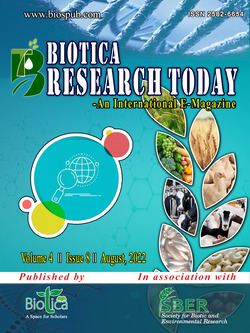
Crop Residue Management using Microbial Consortia: A Viable Alternative to Residue Burning
V. Ramya*
College of Agriculture, Rajendranagar, Professor Jayashankar Telangana State Agricultural University, Rajendranagar, Hyderabad, Telangana (500 030), India
S. Ameer Basha
College of Agriculture, Rajendranagar, Professor Jayashankar Telangana State Agricultural University, Rajendranagar, Hyderabad, Telangana (500 030), India
DOI: NIL
Keywords: Burning, Crop-residues, Microbes, Sustainability
Abstract
Crop-residue is the biomass which is retained either below or on the soil surface after an economic product of a crop has been harvested. It includes leaves, straw, stubble, stalks, haulms, branches, twigs, fruits, roots, grain covers etc. Crops produce large amounts if residues which are potential natural resources that alter soil environment, which in turn influences the soil microbial activity and subsequent nutrient transformation. Residue burning is the most suitable method of disposal with a negative impact on environment releasing greenhouse gases and adversely affecting the soil properties. There are various methods available to manage the crop residues, among which, in situ decomposition using microbes is an effective and eco-friendly alternative. The challenges in crop residue management, methods and strategies for efficient management are discussed.
Downloads
not found
Reference
Bhattacharjya, S., Sahu, A., Phalke, D.H., Manna, M.C., Thakur, J.K., Mandal, A., Tripathi, A.K., Sheoran, P., Choudhary, M., Bhowmick, A., Rahman, M.M., Naidu, R., Patra, A.K. 2021. In-situ decomposition of crop-residues using lignocellulolytic microbial consortia: A viable alternative to residue burning. Environmental Science and Pollution Research 15(2), 69-77.
Sarkar, N., Aikat, K., 2013. Kinetic study of acid hydrolysis of rice straw. International Scholarly Research Notices 2013, 5 pages. DOI: 10.5402/2013/170615.
